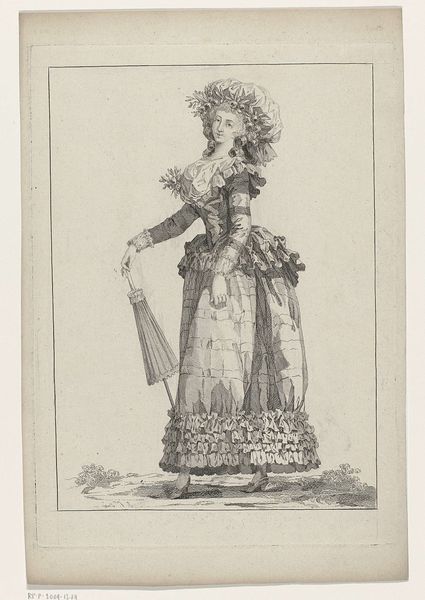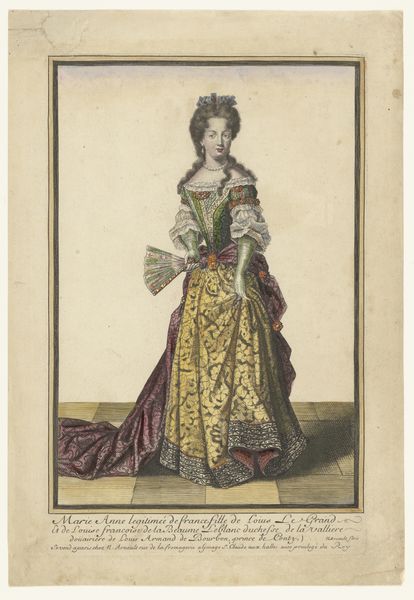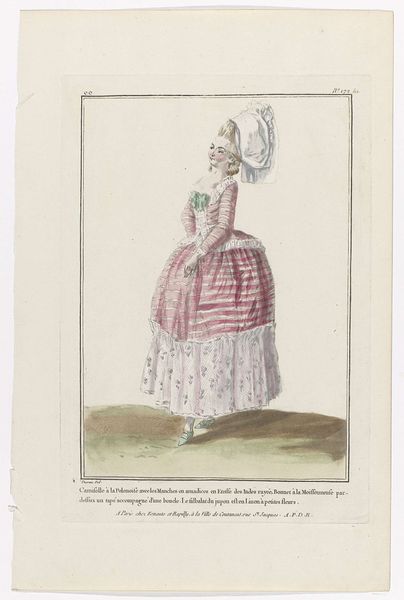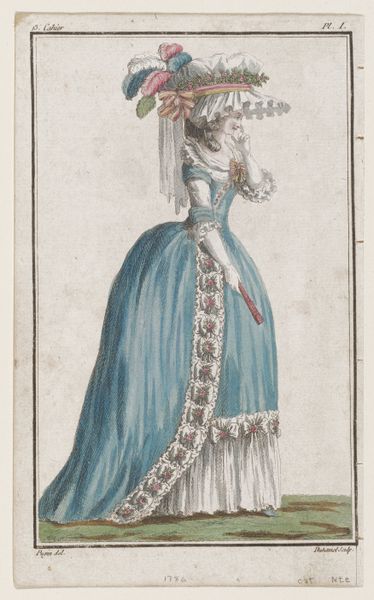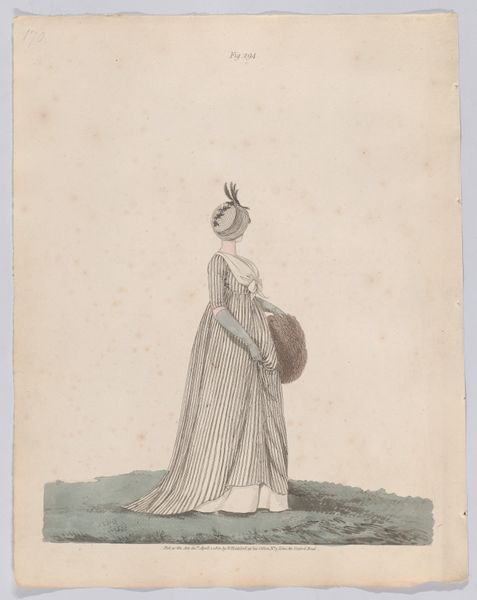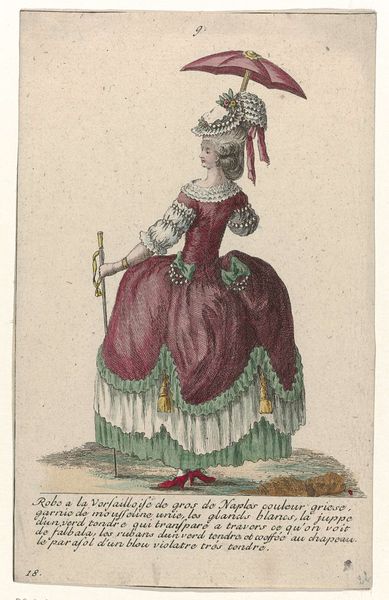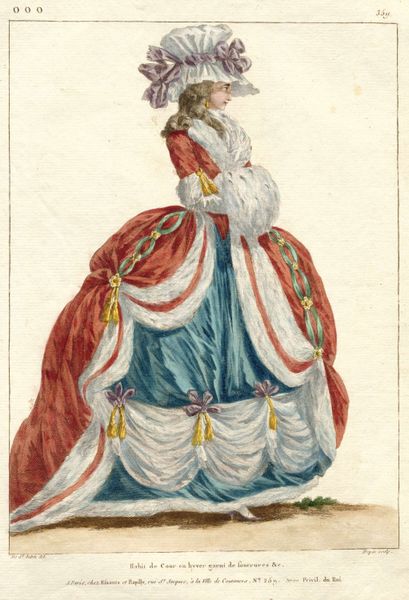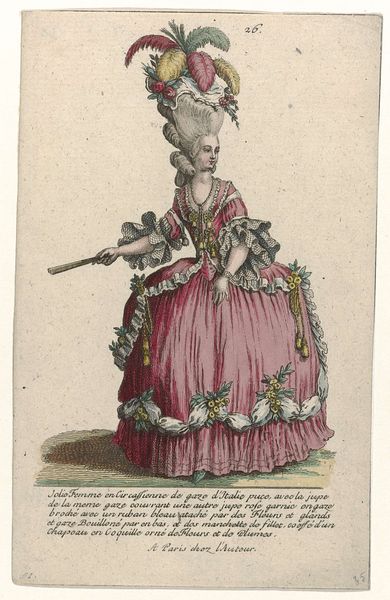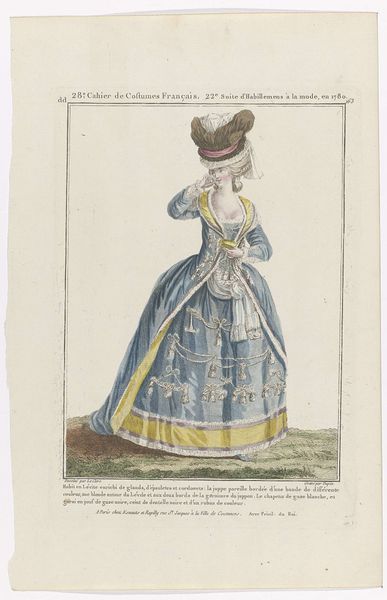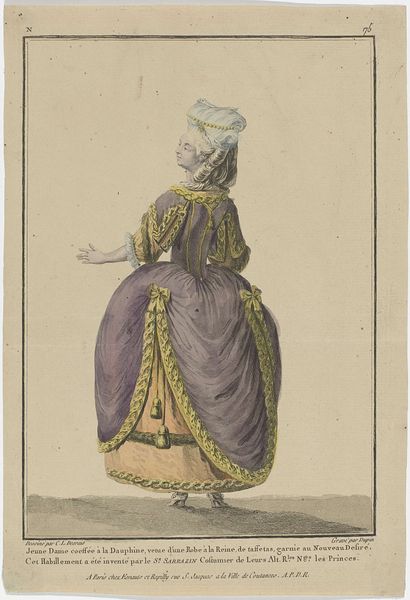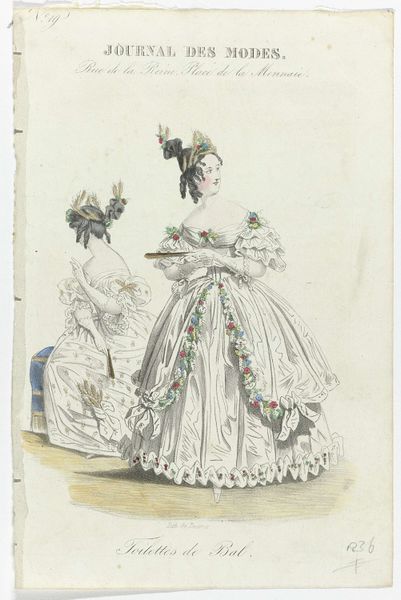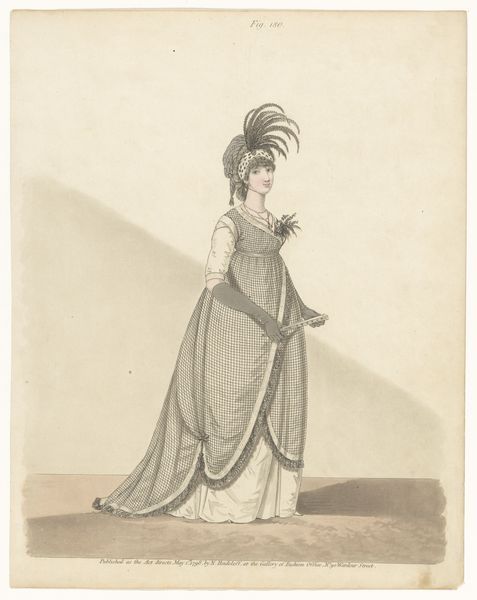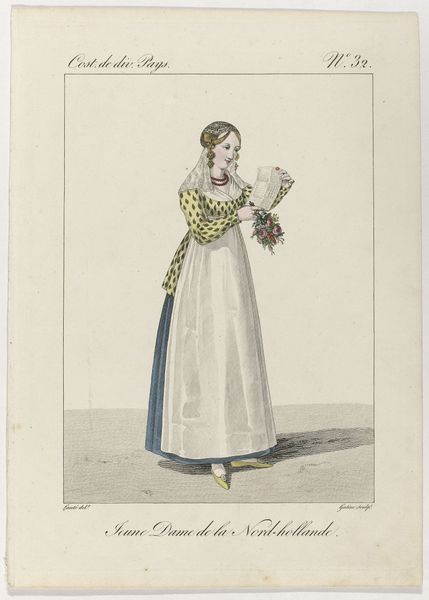
Julie Dorus-Gras in de rol van prinses Eudoxie in de opera La Juive c. 1835 - 1850
0:00
0:00
#
imaginative character sketch
#
quirky illustration
#
childish illustration
#
cartoon sketch
#
personal sketchbook
#
sketchbook drawing
#
watercolour illustration
#
storyboard and sketchbook work
#
cartoon carciture
#
sketchbook art
Dimensions: height 206 mm, width 141 mm
Copyright: Rijks Museum: Open Domain
Curator: This watercolour illustration captures Julie Dorus-Gras in costume as Princess Eudoxie, for the opera "La Juive". It's attributed to Théodore Lejeune, around 1835 to 1850. It comes from the Rijksmuseum. Editor: Well, first glance? Striking use of heraldry. The dress practically shouts power and lineage, but with such soft, faded colours, it seems to be an assertion from a bygone era, viewed from our contemporary space. Curator: Exactly. We see how opera, even then, constructed historical narratives, borrowing from and reimagining established iconographies of power. Her costume embodies the intersection of theatre, historical interpretation, and, really, nation-building through the visual. How do you see the lions impacting that overall reading? Editor: Lions, the traditional symbols of courage and royalty. They're everywhere! Yet, the repeating patterns make them decorative as much as dominant. There's a tension – is it true power, or merely performance? Look at how they are rendered too: there are two subtly distinct symbols. The red lions on a red ground look particularly vivid compared to the white. It all plays with the viewer's understanding of symbolic language. What is it, ultimately, communicating about Princess Eudoxie? Curator: Considering that the opera centers on themes of religious persecution and societal tensions, I’d argue those visual markers, normally understood as fixed, get destabilized here. The costume, while assertive in its imagery, also hints at fragility; The opera itself, La Juive, is a critique of societal prejudice, which is, interestingly enough, a timeless sentiment. Editor: The soft washes also contradict the firm heraldic elements. It is the subtle reminder of human cost. I read a mournful elegance within her features. Curator: Indeed. Lejeune offers us not just a costume, but a reflection on the constructed nature of identity, filtered through historical and contemporary lenses. Editor: It's a clever reminder that even symbols steeped in history can be wielded in fluid, thought-provoking ways. It makes you think about what iconography from our present may resonate – or not – centuries down the line.
Comments
No comments
Be the first to comment and join the conversation on the ultimate creative platform.

